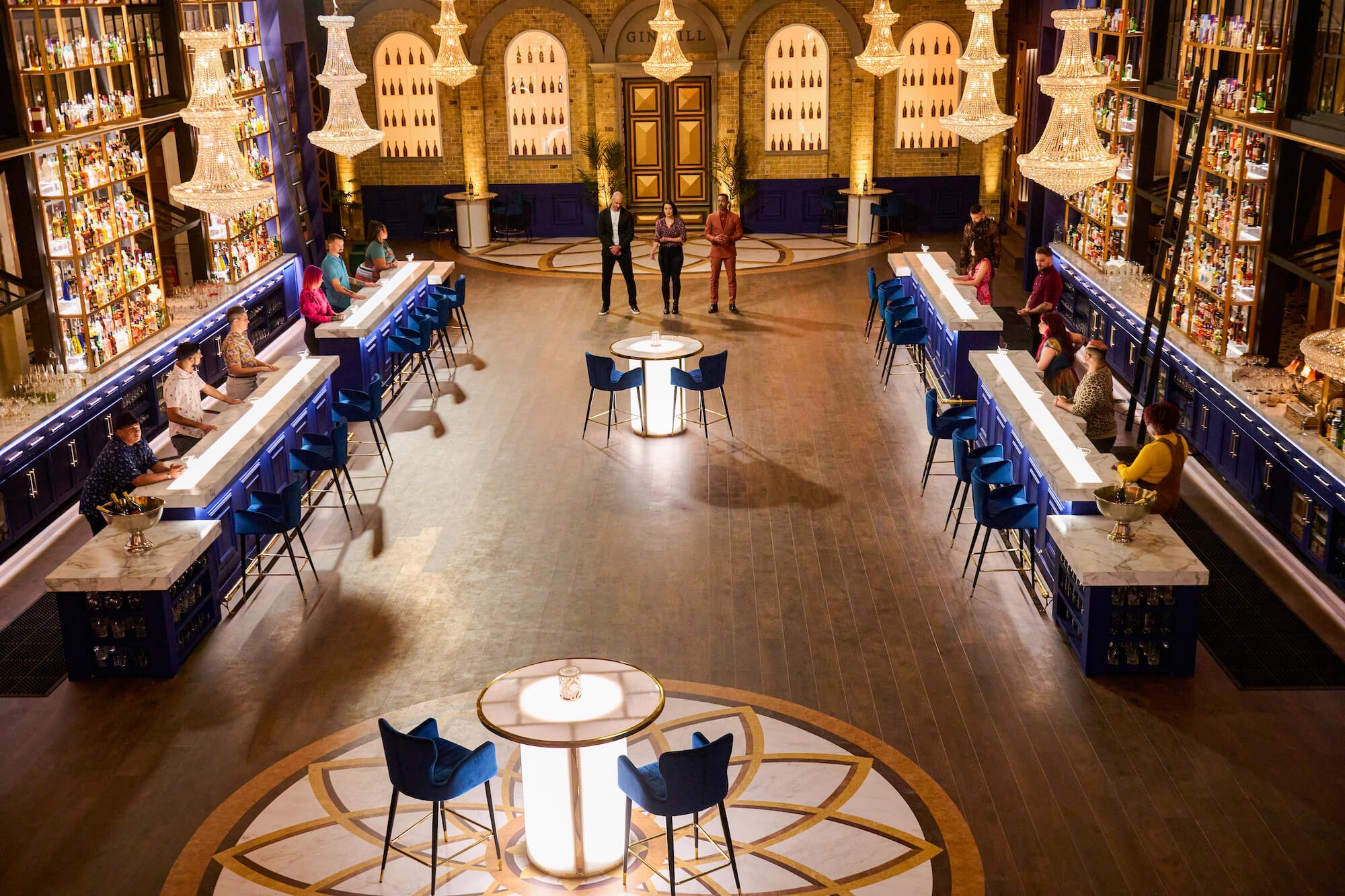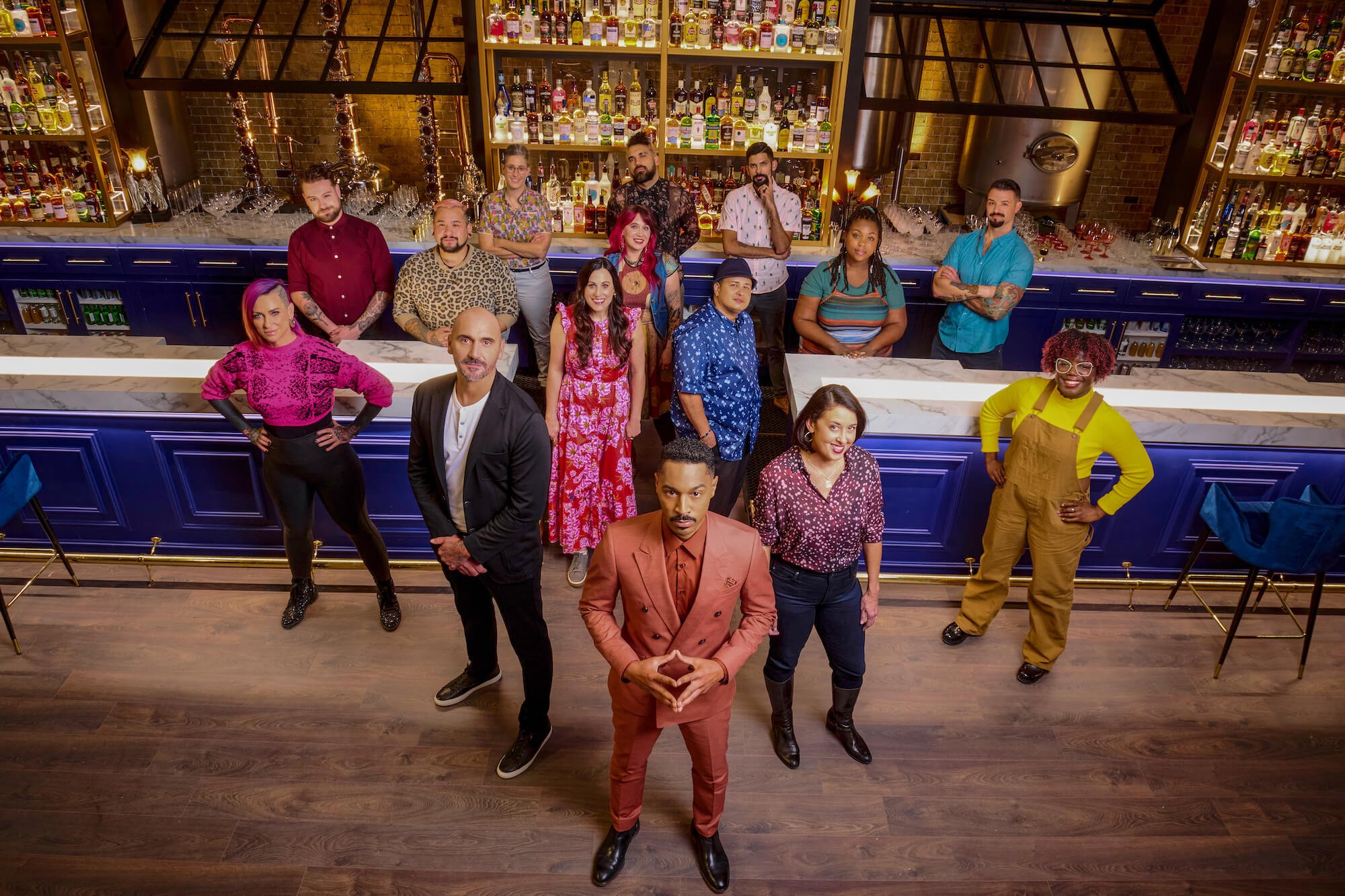Is Drink Masters the First Bartender Competition Show That’s Actually Fun to Watch?
The set of Drink Masters photo courtesy of Netflix
In the last days of October, Netflix’s bartending competition series Drink Masters premiered and during the next week rose into the ranks of the top ten television shows watched on the channel. Will this finally be the show that makes bartending competitions interesting?
There have been other attempts, though as far as I’m aware none have been shown on Netflix. Absolut Vodka sponsored On the Rocks: The Search for America's Top Bartender, and Diageo sponsored World Class Bartender of the Year in the past. (Drink Masters was also sponsored by Absolut’s parent company Pernod Ricard.) These shows both lacked the charm and excitement to drive the amount of traffic that Drink Masters has in its first week on air.
Certainly, the reality show competition format has matured in the ten years since those earlier shows, with a massive success and multiple seasons of cooking and other craft competition shows on multiple streaming services. Drink Masters was produced by the team from Blown Away , a glassblowing competition also on Netflix. But an engaging bartending show requires something more than shaking and stirring to watch.
The Show Format
Dale DeGroff a guest on Drink Masters photo courtesy of Netflix
Over each of the 40-minute episodes, the bartenders compete in challenges, with one person sent home at the end: First all the contestants compete in a challenge, then the judges deliberate. A winner or winning team is decided, and they are usually granted some sort of privilege in the next episode’s challenge such as choosing their teammates or their choice of ingredients. In the second half of each show, the remaining contestants or just the bottom 2 or 3 compete against each other in a new challenge. The judges deliberate again, and one contestant is eliminated.
This is not particularly inventive, nor is the fact that the entire series takes place on one sound stage bar with a kitchen and supply area in the back. Further, bartending mostly requires a series of repetitive arm motions while keeping one’s feet in place except to turn around to grab bottles or serve the next customer down the line. This is the efficiency and conservation of motion that lifetime bartenders strive for. The other part of the job that many people in the industry cite as being more important than mixology skills is providing top-tier customer service. I’m not sure this is something that can be adequately captured on camera, as it is personal to each interaction, so the show has to get by with a lot of limitations.
And yet, I found Drink Masters to be not only engaging but exciting. The editing of the show makes it seem like every bartender completes their cocktails within the last few seconds before the timer in every challenge, whether that is truly the case or not. They also show slow-motion closeups of the final shakes, pours, and plating of the drinks just before presenting them to the judges. It makes the audience, or at least just me, want to reach through the screen and taste them.
Culinary and Molecular Mixology Techniques
Drink Masters smoking! photo courtesy of Netflix
The show emphasizes culinary and molecular mixology techniques and presentations, so that rarely is a drink served that is just a colored liquid in a glass. More often it is topped with some sort of forest-inspired foam and placed on a bed of smoking moss with a side dish of nuts dusted with remnants of the drink’s infused ingredients. (I am making up this example but it’s not at all far off.) A surprising number of snacks and edible garnishes are presented along with the drinks, and this is encouraged by the judges in their challenge briefs.
Techniques or formats that bartenders use during the show include carbonating, smoking, milk punch clarifying, flambeeing, infusing, fat washing, freezing with liquid nitrogen, and even candle-making by one bartender. These produce cocktails that include gels, foams and airs, oleo saccharum, caviars and spheres, and other non-liquid formats. Equipment used includes everything from blast freezers to tabletop stills. All of these tools, ingredients, and processes add a great amount of depth to the usually repetitive process of traditional bartending on a busy night. They’re closer to cocktail development than bar service.
Bartenders on the show need to be able to quickly learn some of these techniques on the fly and execute perfectly balanced cocktails with unfamiliar ingredients. They have distilled bread and made vermouth pearls and sometimes failed and started their drinks from scratch with only a few minutes left in a challenge. There is a lot to look at, and a lot of skill to appreciate.
The People & Personalities
Drink Masters contestants photo courtesy of Netflix
Thankfully, the producers don’t use creative editing to emphasize villainy and increase drama between contestants, unlike in many reality television shows. There is a touch of interpersonal conflict, but far many more group hugs after someone is eliminated. The ten contestants from the United States and Canada are a diverse group of working bartenders, plus one Instagrammer/book author, and judges’ challenges frequently require contestants to include elements from their personal history or home base. Contestants pulled in ingredients from France, Japan, New Mexico, Puerto Rico, and elsewhere. Some contestants displayed wild and sometimes-risky experimentation and creativity, while others emphasized precision, elegant simplicity, or sense memory in their drinks. Throughout the show there are leaders and underdogs and these changed order repeatedly, keeping a good overall pace despite the familiar competition format.
Viewers are also able to watch the bartenders run around to grab exotic ingredients and try the high-tech techniques and new-to-them equipment. Fast-action editing helps keep this process engaging in each episode, despite rarely revealing the process of any one technique from beginning to end. Nearly all the drama in the show is of bartenders creating drinks, not crying backstage and the like.
Judging
Drink Masters judging photo courtesy of Netflix
Cocktails are judged (by Clover Club’s Julie Reiner and BarChef’s Frankie Solarik) on the combination of taste, appearance, and creativity—important for a show in which viewers have no way to gauge the first factor but had a window into the second two. Though the balance and flavor of the liquids is a third of the judging criteria, the emphasis for the competition, and what makes the show engaging, is all the other stuff that happens behind the bar and outside the glass.





